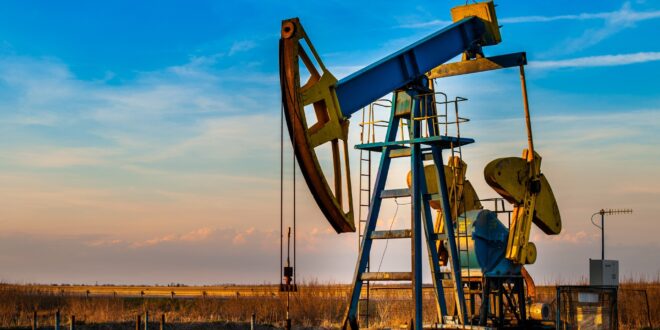Some of the world’s largest national oil companies (NOCs) have improved significantly their resilience to oil price slumps in the near future thanks to huge cash flows and profits in the past two years. But many of those companies face challenges in sustainability and ESG metrics due to governance issues, disclosures, and the lack of Scope 3 emission targets.
That’s according to energy consultancy Wood Mackenzie, which has recently added eight NOCs into its Corporate Resilience and Sustainability Indices and stacked them against the international oil majors in terms of resilience and sustainability.
Resilience To Volatile Prices
The record cash flows at NOCs as oil prices surged last year are giving most of those companies – Saudi Aramco, China’s CNOOC, Sinopec, and PetroChina, Brazil’s Petrobras, Thailand’s PTTEP, Malaysia’s Petronas, and Argentina’s YPF – financial flexibility to withstand a price collapse, according to WoodMac. Moreover, most of them have low production costs and favorable domestic tax regimes, protecting their cash flows even at lower energy commodity prices.
But long-term resilience could be challenged by the NOCs’ excessive commitment to domestic upstream and a lack of unconventional exposure.
“At the same time, NOCs’ downstream portfolios are often affected by regulatory pricing controls imposed by their respective governments, which reduces profitability,” WoodMac’s corporate research analysts say.
Of the eight NOCs reviewed, Saudi Aramco, CNOOC, Petrobras, and PetroChina rank close to the top international oil majors in terms of resilience. Aramco is fifth among IOCs and NOCs after TotalEnergies, ExxonMobil, Shell, and BP, according to the analysis by Wood Mackenzie.
“Besides Aramco, CNOOC Ltd, Petrobras and PetroChina all score highly on resilience, on a par with the Majors and leading Independents. In contrast, YPF’s weaker financial position and current phase of heavy investment put it in the bottom quartile,” WoodMac says.
According to Wood Mackenzie’s Vice President of Corporate Analysis, Luke Parker, it is absolutely fair to compare NOCs with IOCs in terms of resilience of sustainability as all oil firms are exposed to the same risks in the industry, and “ultimately they will be judged on the same metrics.”
Weaker Sustainability
Resilience in the near term for most NOCs may be comparable to the biggest IOCs, but NOCs’ sustainability ratings are generally weaker, both in comparison to their resilience ratings and versus other oil companies, WoodMac’s analysis showed.
“Fundamentally, most NOCs have been relatively slow to act on climate risk and have so far failed to seize the opportunities presented by the energy transition,” the analysts said.
“Finally, most NOCs are weak on governance and disclosure, with no Scope 3 targets set, and low-carbon businesses still in their infancy. The former is relatively easy to address for those companies that are motivated to do so, but the latter will require concerted effort and considerable resource.”
Last Man Standing In Oil
Some NOCs have started to invest in low-carbon energy, including carbon capture, utilization, and storage (CCUS) and hydrogen, but many believe that they need to take full advantage of their vast domestic oil and gas resources while demand is still growing as governments reliant on oil export revenues – such as Saudi Arabia’s – need the oil money, and will need it for decades to come.
Others are announcing bold emission-reduction targets.
ADNOC, the Abu Dhabi oil company not part of WoodMac’s resilience and sustainability analysis, has recently brought forward its target for net-zero emissions to 2045 from a previous target of 2050, becoming the first oil company in its peer group to commit to net zero in 2045.
ADNOC’s group CEO Sultan Ahmed Al Jaber is president designate of the COP28 climate summit in Dubai next month, and the company has been announcing various low-carbon strategies ahead of the summit, saying the oil industry must lead decarbonization efforts.
Saudi Aramco, for its part, says emissions should be cut, but it also believes that investment in oil and gas production should be raised to avoid shortages in the future.
Aramco’s chief executive Amin Nasser said last week that the Saudi oil giant is working on renewables, e-fuels, hydrogen, and carbon capture and storage (CCS). But the world will need oil and gas for decades and renewables won’t meet this need for decades, he added.
“We need a better dialogue between industry and COP delegates, as industry is the only one capable of delivering new or old energy solutions,” Aramco’s CEO added.
Saudi Aramco and the Saudi-led OPEC cartel have been warning for years that a disorderly energy transition with low investments in hydrocarbons would worsen energy security as the world still needs growing volumes of oil and gas.
OPEC has also criticized the International Energy Agency’s (IEA) forecasts of peak oil demand before 2030.
The world needs $14 trillion in cumulative investments in the oil sector by 2045 to ensure market stability and avoid energy and economic chaos, OPEC said in its annual World Oil Outlook earlier this month.
“Calls to stop investments in new oil projects are misguided and could lead to energy and economic chaos,” OPEC Secretary General Haitham Al Ghais wrote in the foreword to the report.
Saudi Energy Minister Prince Abdulaziz bin Salman has also recently commented on the IEA forecast of peak oil demand this decade, saying that “They have moved from being a forecaster and assessor of the market to one practicing political advocacy.”

 Iran Energy News Oil, Gas, Petrochemical and Energy Field Specialized Channel
Iran Energy News Oil, Gas, Petrochemical and Energy Field Specialized Channel



